
When asparagus is in season, you better enjoy a few green stems every chance you get. If you don’t spear the chance, you’ll likely have to wait another year till they’re fresh again. That’s a long time to wait!
It’s one thing to harvest asparagus fresh from the garden. But what happens when you bring a bunch home from the store? Is it fresh, young and tender, or on its way to becoming woody and unpalatable? Do you know what you should be looking for in the market?
First, we’ll give you some tips on selecting the best asparagus spears, then we’ll move on to the easiest way to store it at home, just in case it won’t be consumed the same day you buy or harvest it.
How To Select The Best Asparagus
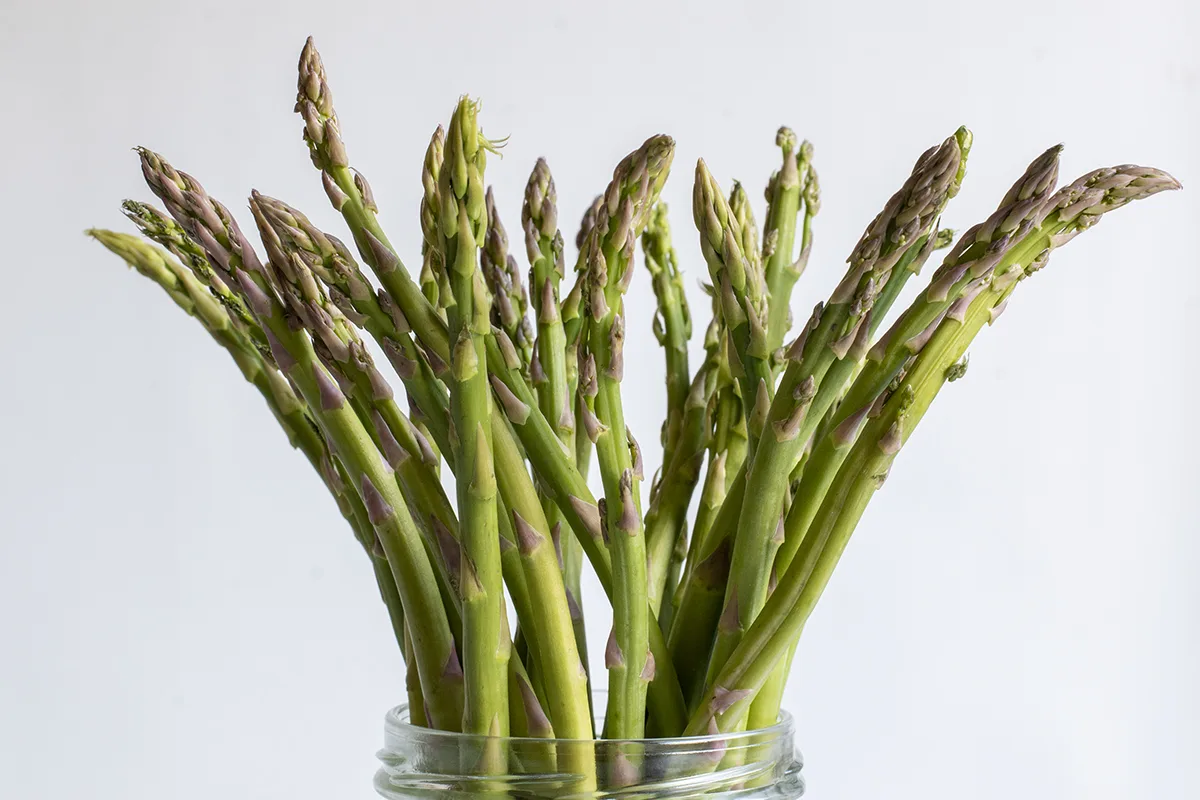
The tastiest asparagus is tender, with subtle earthy, grassy and bitter undertones. Some people say it tastes similar to broccoli, while others liken it to fresh green beans. Either way, it’s a fantastic garden vegetable that is quite beneficial for your health. But we’ll get to the benefits later.
In selecting asparagus at the market or store, there are a few things to look out for. After all, the best quality produce has the biggest potential for becoming a hit dinner.
To get the most out of your asparagus spears, keep an eye out for the following:
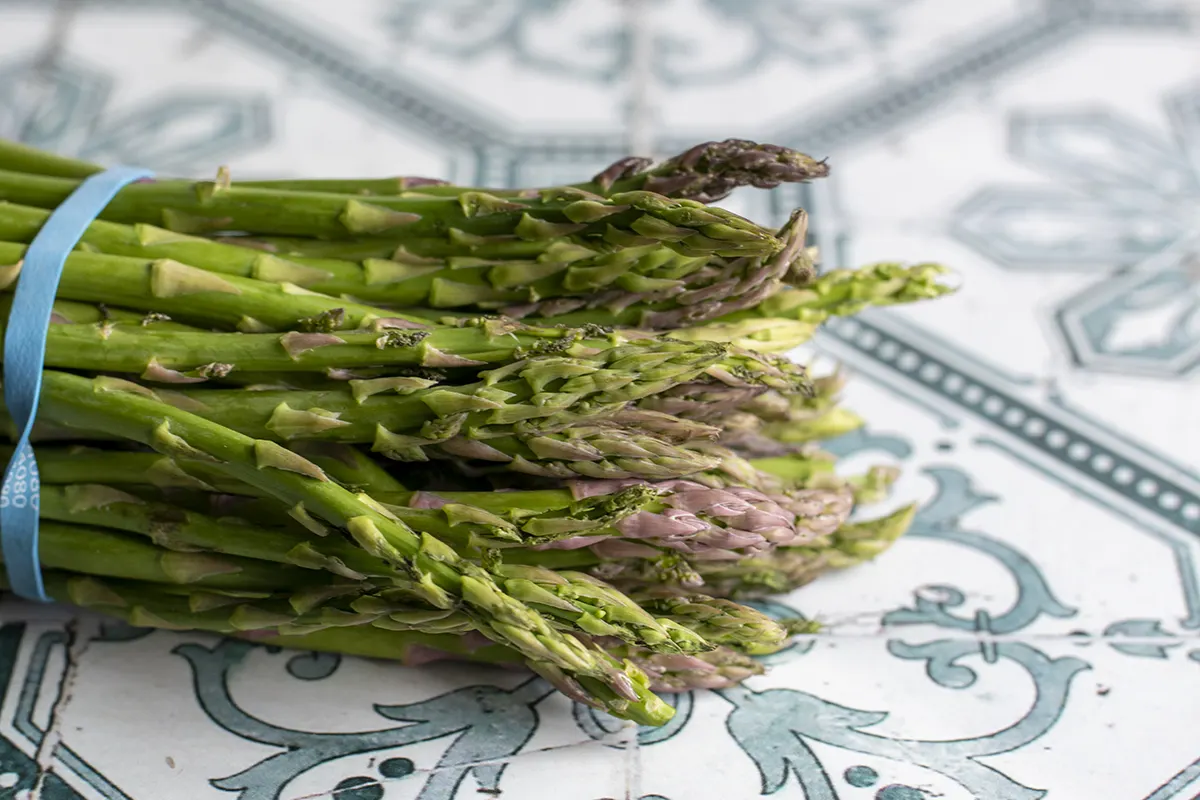
Compact Buds – the most tender asparagus spears are the youngest ones. The way to immediately recognize this is by observing the buds. If they are tight and compact, the spears are still very young. If the buds are beginning to open, they are aging and slowly becoming woodier.
Firm Stems – asparagus spears that have been sitting on the shelf too long tend to dry out and become limp from the absence of water. Pass by the wrinkly stems or buy them at a discount and cut them up for use in a soup stock.
Rich Color – most asparagus stalks are rich green in color with a little purple on the tips, though there are delicious white and purple varieties worth exploring. If the stems are turning shades of yellow, they are definitely older and probably past their prime.
Cut Ends – another thing to look out for is dryness in the cut ends. This is something you can cut off more of at home; make sure it doesn’t extend too far up the spear.
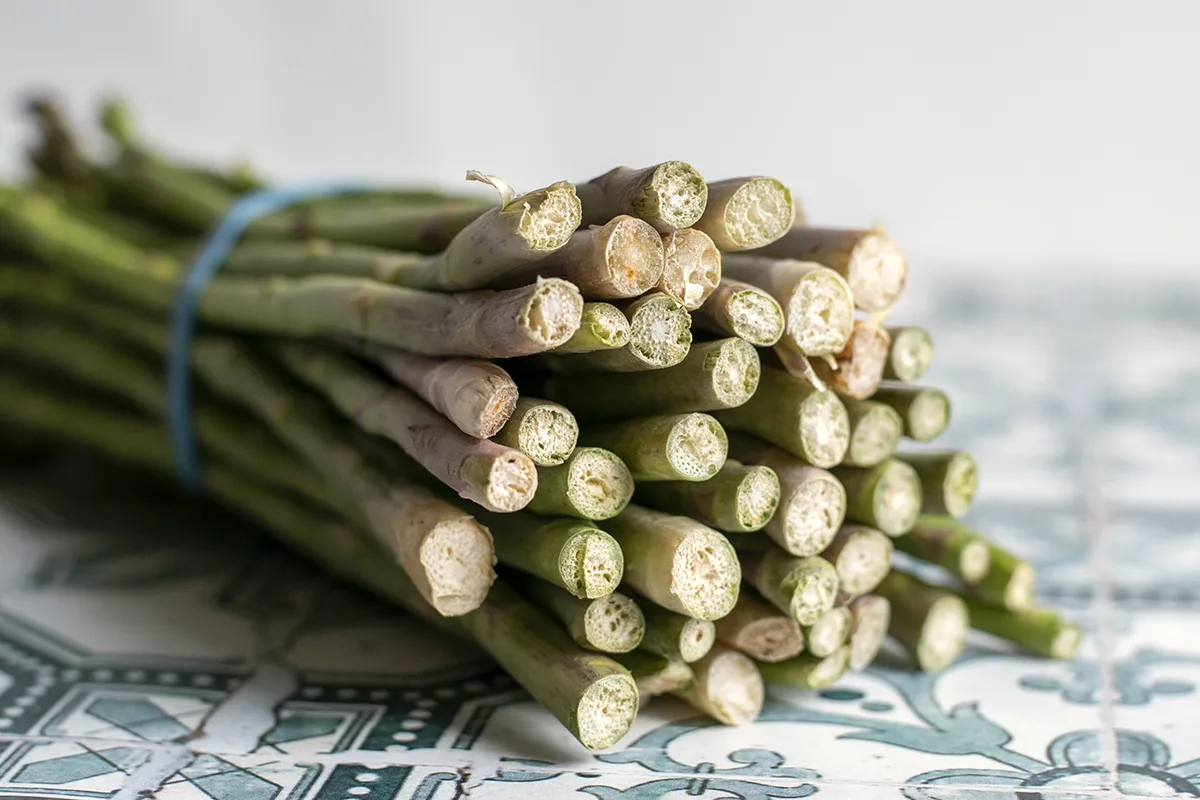
Thick or Thin – thick stalks are best for broiling, roasting or grilling, and though you might expect them to be woodier, they have better texture than the thinner spears due to their higher fiber content. Thinner spears are good for steaming and stir-frying.
Now that you know what to look for let’s discuss how to store that perfect bunch for longer than a day.
How To Keep Asparagus Fresh for Longer
“Fresh for Longer” is a relative term when it comes to food storage. Most fresh fruits and vegetables don’t last longer than a week after picking or purchasing, whereas something like honey lasts forever.
Here, the quality of the picked asparagus spears matter; they shouldn’t be bruised, spotty or damaged in any way.
If you would like your bunch of asparagus to last for 1-2 days before cooking and eating, the first method is easy enough.
Method 1: Short Term Storage of Asparagus
If a meal of grilled asparagus has already been promised, all you need to do when bringing your asparagus spears home is to wrap the bunch in a few damp paper towels and place it in an opened plastic bag.
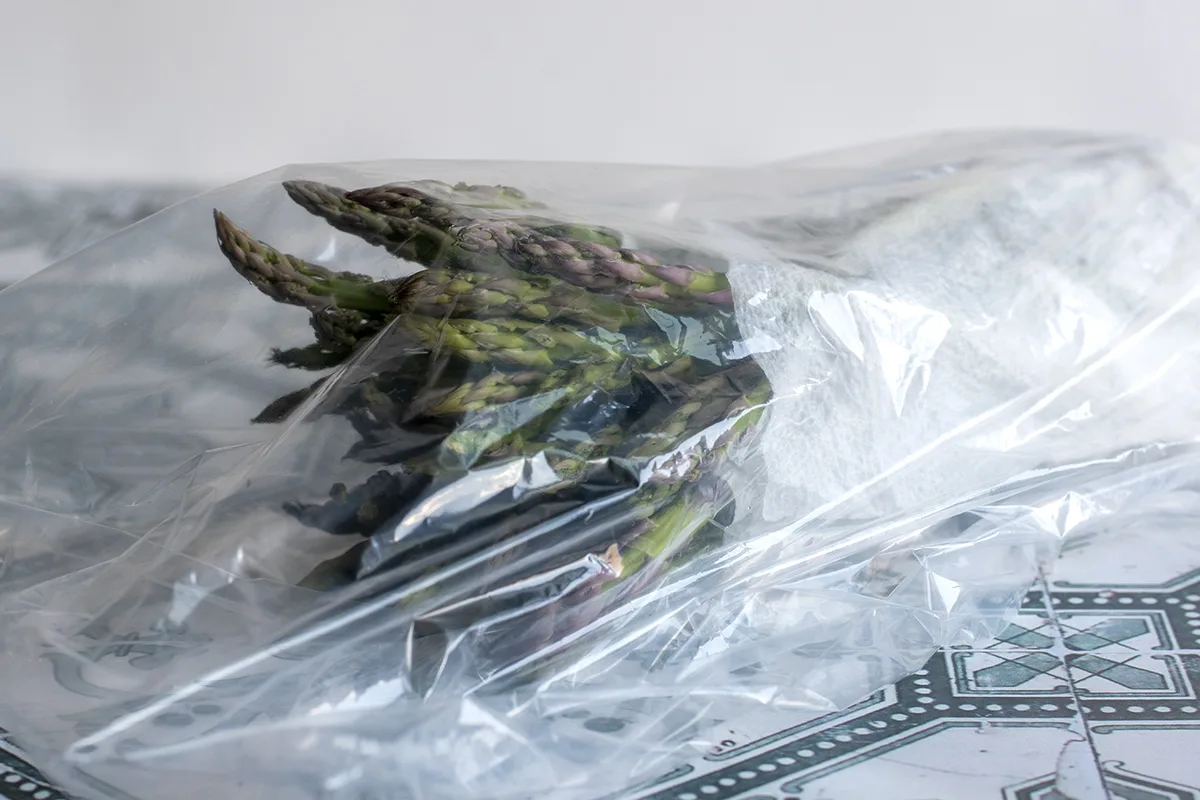
Asparagus is best stored in the crisper drawer of your fridge for a day or two.
Related reading: 16 Fruits & Vegetables You Should Never Store in the Fridge + 30 You Should
Method 2: Longer Term Storage of Asparagus
If you’re thinking longer term, say three days, up to a week, the best method for storing your asparagus is in a jar with water. It doesn’t get more simple than this.
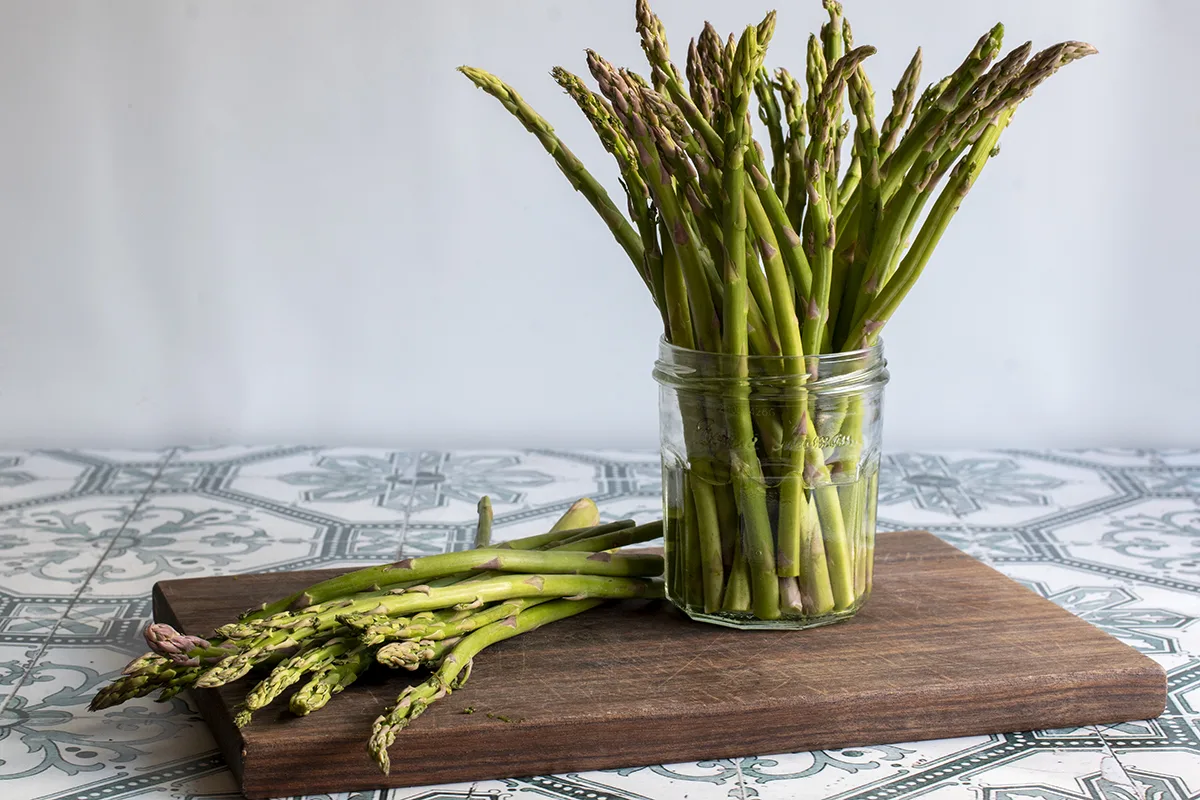
While a jar of asparagus spears is best stored in a chilled fridge, it also works outside the fridge as well, tucked away in the coolest corner of your home.
But before putting them in a jar of water, be sure to trim off an inch from the ends using a sharp knife or kitchen shears.
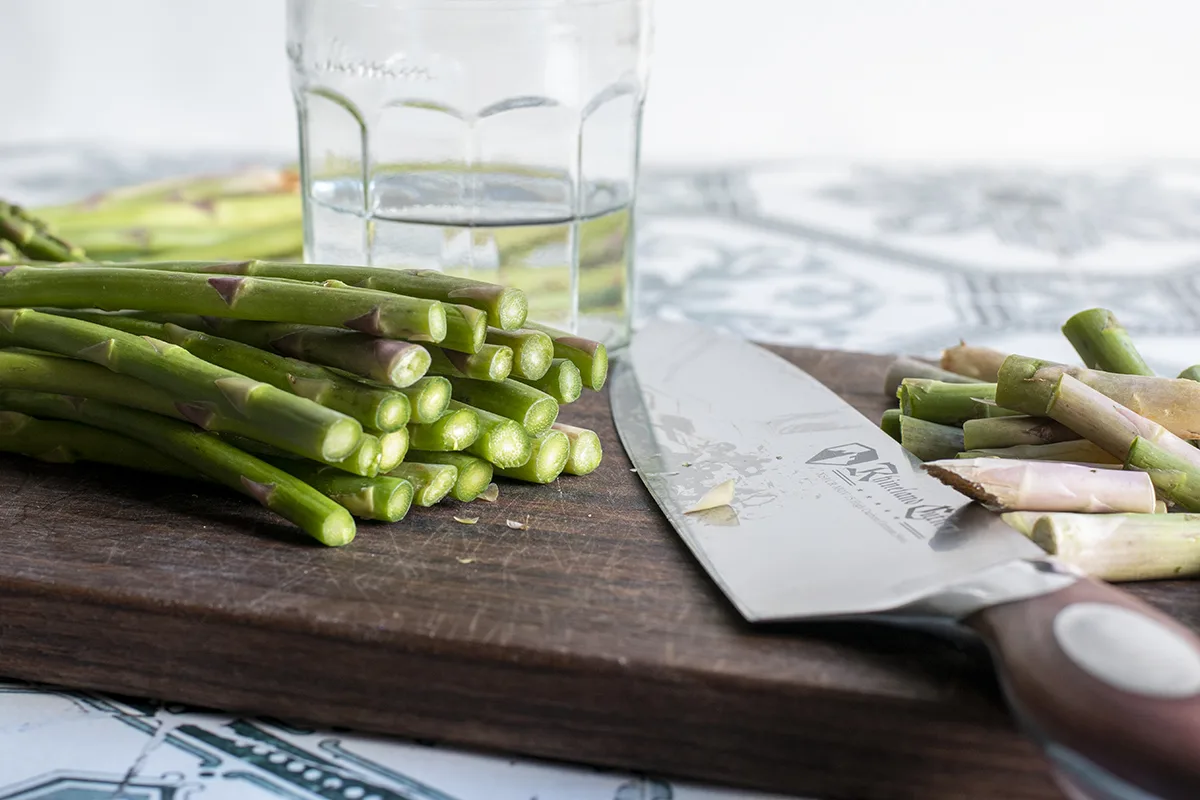
Then stand the asparagus spears up in about an inch of water and call it good. Be careful not to crowd them too tightly.
Additionally, you can also cover the spears with a thin plastic bag held tight with a rubber band. Make sure to change the water every other day or as soon as it starts to appear cloudy.
Asparagus Storage Tips
We just mentioned not to overcrowd your asparagus spears. To remedy this, simply use multiple jars or glass cups.
It’s also wise not to push your asparagus all the way to the back of the fridge where it’s coldest. By similar means, avoid placing the jar of spears on the top shelf. It’s far too cold there for the asparagus to be happy. The best place to store your jar of asparagus is in the door, where it’s possible to keep asparagus for as long as 10 days before consuming.
The key to storing asparagus for longer is to prevent it from drying out. Adding some form of moisture is absolutely essential, standing the spears in a jar of water or wrapping them in a damp paper or tea towel.
3 Ways To Preserve Asparagus
Due to the very short asparagus season (approximately 6-8 weeks), it’s helpful to know that there are other ways to extend the enjoyment of those flavorful quick-growing spears.
Choose the one that best suits your needs, skills and equipment.
Freezing Asparagus
The absolute easiest way to preserve asparagus is to freeze it. But it does take some work, you can’t just toss it in the freezer and call it a day. First, it requires blanching.
To blanch asparagus, it needs to be trimmed, cut into whatever lengths you prefer, then tossed into boiling water for several minutes, followed by a cold ice bath. All of this needs to happen before the whole spears or chopped asparagus reaches the freezer.
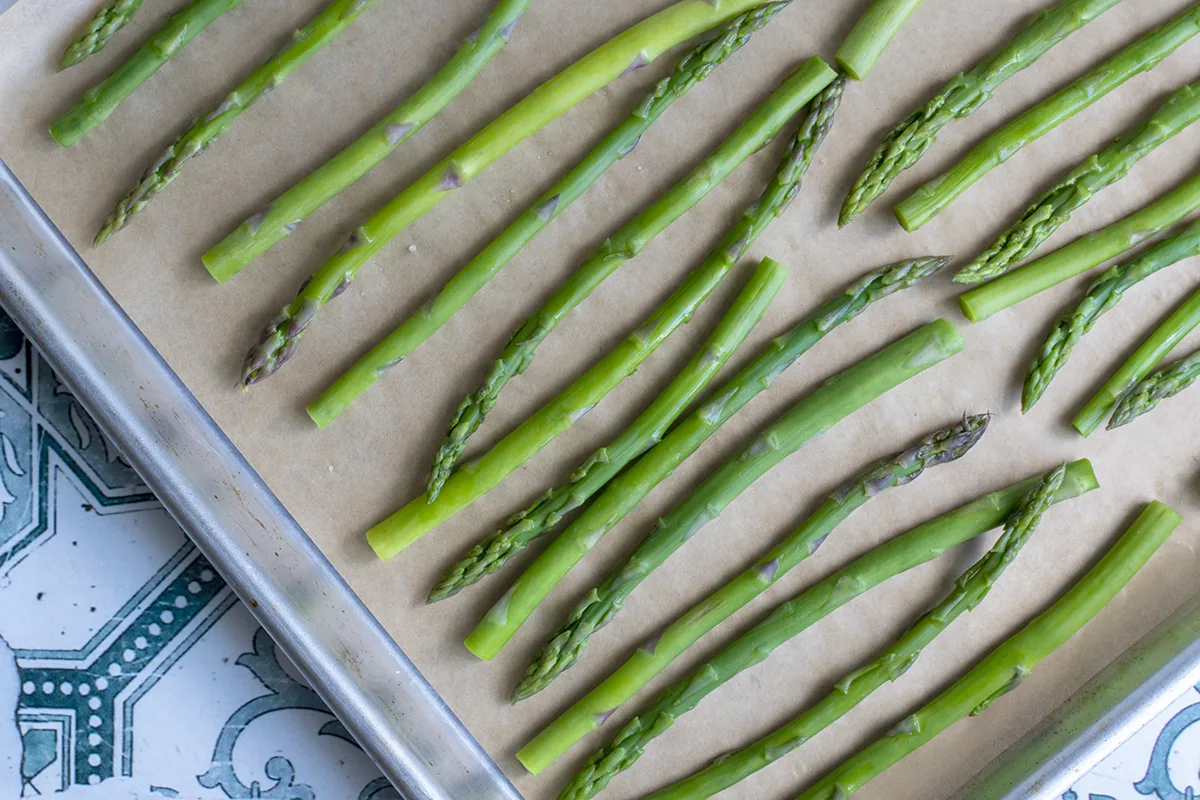
To prevent frozen asparagus from sticking together, lay the pieces on a baking tray first for a couple of hours, then transfer them to a storage container or bag. Blanched asparagus will last up to 6 to 8 months in the freezer.
Here’s a helpful tutorial to guide you along your asparagus freezing way.
Canning Asparagus
Slightly more difficult than freezing, canning asparagus is the next best way to preserve the flavor of those delicious spears.
Because asparagus is a low-acid food, it is best preserved pickled rather than pressure canned. Check out our Beginners’ Guide to Get Started Canning and Preserving Food for more information if you are new to putting food in jars.
Once you learn how to make a proper brine, there’s nothing you can’t pickle. Including asparagus.
Here is the perfect pickled asparagus recipe for canning.
Refrigerator Asparagus Pickles
If you don’t have such serious pantry goals or simply don’t have a pantry at all, you can also make refrigerator pickles from your asparagus spears. The process is similar to making Meredith’s 5-Minute Fridge Pickles.
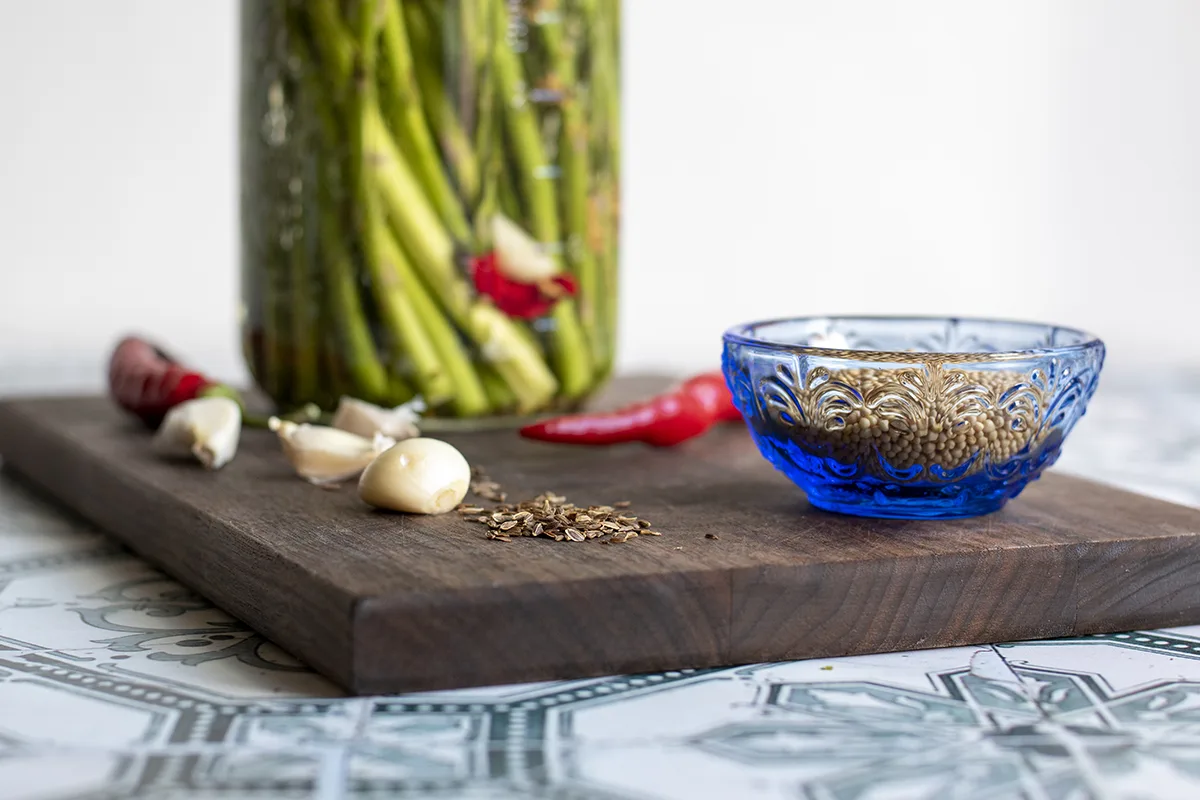
All you need to do is this:
- Prepare asparagus stems by trimming the ends.
- Put spears in a jar with select herbs and spices (garlic, caraway, red pepper flakes, dill and oregano work well).
- Make a brine and fill the jar up to the rim.
- Set in the fridge and eat up the asparagus stalks within 30 days.
Sounds easy enough, right?
Take a few minutes to make this Quick Pickled Asparagus recipe from Fork in the Road, and enjoy your asparagus pickles for a month to come.
Dehydrating Asparagus
Personally, I’ve never had dehydrated asparagus, not in chunks and definitely not powdered. But since you can powder nettle, make homemade tomato powder and strawberry powder, why not powder asparagus?
Lo and behold, it can be done, and it isn’t as tricky as you think.
Once you have your fresh spears, wash them, dry them and cut them into small pieces, crosswise or lengthwise. Then blanch them just as you would do for freezing, making sure to chill them in an ice bath. Let them dry, then arrange them on several dehydrator trays. Dehydrate at 125°F for up to 8 hours. Then store in jars or grind as desired.
Powdered asparagus can be used in soups and stews, sprinkled on eggs Benedict and so on.
Why Is Asparagus Good For You?
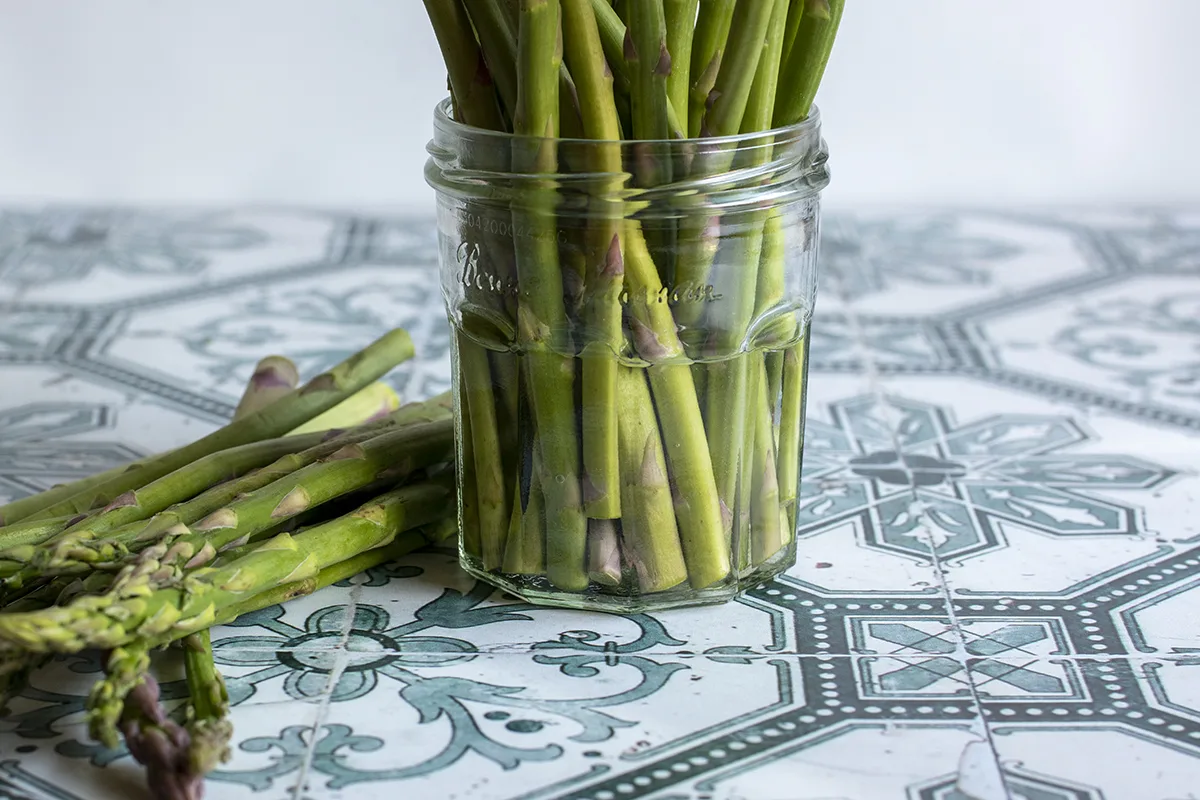
No article on asparagus would be complete without some nutrition information, so let’s quickly state the facts, then let you get back to what you love doing best.
Asparagus contains the following:
- Vitamin C
- Vitamin A
- Vitamin K
- Vitamin E
- Folate (B9)
- Antioxidants
- Fiber
In addition to that, asparagus is about 94% water, so you can eat as much as you want and not gain weight. That is if you consume it without butter or bacon. If you choose the latter, it’s back to the gardening gym for you.
If you are dedicated to growing your own asparagus, for the simple pleasure of heading out to the backyard to harvest a fresh bunch, here are a couple more gardening articles you won’t want to miss:
How To Plant an Asparagus Bed – Plant Once & Harvest For 30+ Years
5 Quick Spring Jobs To Prep Your Asparagus Bed For Big Harvests

Get the famous Rural Sprout newsletter delivered to your inbox.
Including Sunday musings from our editor, Tracey, as well as “What’s Up Wednesday” our roundup of what’s in season and new article updates and alerts.

